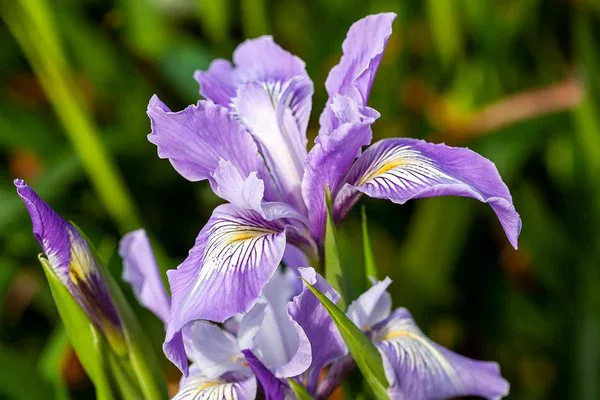Irises are known for their stunning, vibrant blooms and are a beloved addition to any garden. After their peak flowering season, many gardeners wonder what to do with irises to ensure their continued health and beauty. Proper post-bloom care for irises is essential for their longevity and to encourage robust flowering in the following season.
Deadheading Irises
After your irises have finished blooming, the first step is to deadhead them. Deadheading involves removing the spent flowers, which not only tidies up the appearance of the plant but also redirects the plant’s energy away from seed production and back into the rhizome (the thickened underground stem of the iris) for growth and future flowering. Using clean, sharp scissors or pruning shears, trim the flower stalks down to the base, being careful not to damage the foliage.
Pruning and Grooming Iris Foliage
Once the flowers are removed, the iris foliage remains, and it’s essential to maintain its health and appearance. While it may be tempting to cut the foliage back, resist the urge. The leaves are critical for photosynthesis, which provides the energy necessary for the rhizome to develop and store nutrients. Groom the foliage by removing any damaged or yellowing leaves but leave the healthy green leaves intact.
Division of Irises
Irises have a natural tendency to become overcrowded over time, leading to reduced flowering and overall plant health. To prevent this, iris rhizomes should be divided every 2 to 3 years, preferably late summer or early fall. To divide your irises, carefully dig up the entire clump of rhizomes. Separate the individual rhizomes, making sure each division has healthy roots and at least one fan of leaves. Replant these divisions at the appropriate depth (rhizomes should be partially exposed) and spacing to encourage optimal growth.
Irrigation and Watering
Irises need consistent moisture, especially during the growing season, but overwatering can lead to rhizome rot and other problems. After flowering, maintain regular watering to support the development of the rhizomes. Adequate hydration is essential for their growth. Water deeply but infrequently, allowing the soil to dry slightly between watering sessions. During the dormant season, which typically occurs in late summer, reduce watering to prevent rot.
Fertilizing Irises
To ensure your irises receive the necessary nutrients for growth and blooming, it’s important to fertilize them. Use a balanced, slow-release fertilizer with equal amounts of nitrogen, phosphorus, and potassium. Apply the fertilizer in early spring, just as new growth begins. Avoid over-fertilization, as excessive nutrients can harm the plants. Follow the package instructions for application rates.
Mulching
Mulching can help maintain soil moisture levels, suppress weeds, and protect the rhizomes from extreme temperatures. Apply a 2-3 inch layer of organic mulch around your irises, taking care not to cover the rhizomes themselves. Keep the mulch several inches away from the base of the plants to prevent rot.
Disease and Pest Management
Keep a close eye on your irises for signs of pests or diseases. Common issues include iris borers, which can tunnel into the rhizomes, and fungal diseases like iris leaf spot. Regularly inspect your plants and remove any damaged or infected foliage. If you notice significant problems, consider using appropriate pesticides or fungicides following the instructions carefully.
Weeding and Soil Maintenance
To maintain the health and vitality of your irises, keep the planting area free from weeds. Weeds can compete with irises for nutrients and moisture, which can hinder their growth. Regularly weed the area surrounding your irises. Additionally, every few years, replace the top layer of soil around your irises with fresh, well-draining soil to provide them with optimal growing conditions.
Protecting Irises in Harsh Climates
In regions with severe winters, irises may require additional protection. After the first frost, apply a layer of mulch or straw over the iris bed to insulate the rhizomes and prevent freeze-thaw cycles. Remove this protective layer in early spring when the risk of frost has passed.
Planning for Future Blooms
To ensure you have a continuous display of beautiful irises, consider planting different varieties with staggered bloom times. This will extend the blooming season and provide a dynamic and vibrant garden throughout the year. Plan your garden layout and iris selections to maximize the visual appeal of your landscape.
Conclusion
Caring for irises after they finish blooming is a crucial aspect of maintaining their health and ensuring beautiful, vibrant blooms year after year. Deadheading, grooming foliage, dividing overcrowded clumps, proper irrigation, fertilization, and pest management are all important steps to consider in post-bloom care.


